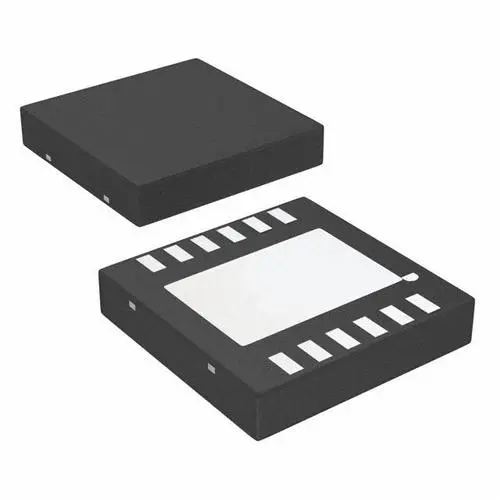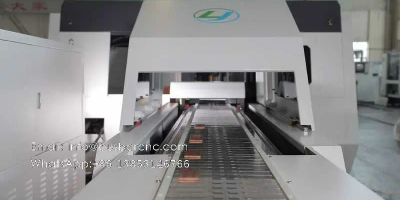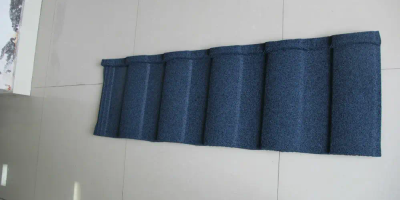The PMIC market has become a hot topic recently.
First of all, in 2021, China’s domestic display panel PMIC chip market is close to $700 million, and Jichuang North’s PMIC chip will become the domestic product with the largest market share. This is the first time Jichuang North has surpassed Liqi Technologies (Richtek) in market share.
Meanwhile, due to the hot market for PMIC, including Qualcomm and Mediatek are looking for PMIC chips to switch from 8-inch wafers to 12-inch wafers.
While the market is booming, relevant domestic manufacturers will also perform well in 2021 driven by such a market. Shengbang’s revenue increased by 87.07% year on year, Xinpeng’s revenue increased by 75.44% year on year, JingfengMingyuan’s revenue increased by 108.75%, Shanghai Beling’s revenue increased by 51.95%, and Siripu’s revenue increased by 134.06%.
Why did PMIC chips explode?
PMIC (Power Management Chip) is an extremely broad range of chips for industrial and networking devices including smartphones, tablets, solid-state drives, networking and wireless iot devices, as well as application-specific power management ics for a wide range of automotive, consumer electronics, industrial and networking applications, Including car TFT monitors and ultrabooks, laptops and tablets.
As a key component in managing the power supply of electronic devices, Pmics can integrate multiple functions to more efficiently use space and manage system power. The functions that a PMIC can implement usually include voltage converters and regulators, battery chargers, battery voltmeters, LED drivers, real-time clocks, power sequencer, and power control.
It is precisely because of the fundamental role of PMIC in electronic equipment that PMIC, although humble, is one of the largest market segments of analog chips. These chips are needed for almost every working device that uses electricity, from household appliances to mobile phones and computers, from communication base stations to smart cars. That’s why PMIC is so popular.
Chinese PMIC manufacturers found the initial effect
PMIC track has a broad prospect, while the entry threshold is relatively low, PMIC emphasizes reliability and stability, and has a long periodicity after mass production. These characteristics make PMIC track become a competitive one for domestic manufacturers.
Sainbon micro power management analog chip includes LDO, microprocessor power monitoring circuit, DC/DC step-down converter, DC/DC step-up converter, DC/DC voltage converter, backlight and flash LED driver, AMOLED power chip, PMU, OVP and load switch, battery charge and discharge management chip, battery protection chip, motor driver chip, MOSFET driver chip, etc.
Among the power management products of Shanghai Beiling, a car gauge LDO and an LED driver chip will be sold in batches in 2021, and there are also a number of power products that have received the intended demand of automotive electronics customers, which are expected to be sold successively in 2022. The number of Shanghai Beiling industrial grade and vehicle gauge grade power management chip products continues to increase, further improving the market share in industrial control, communication, automotive electronic power management chip. In 2021, the sales volume reached 650 million yuan, with a year-on-year increase of 10.29%, and the gross profit margin reached 42.49%.
Our power management chips are mainly used in the fields of new energy vehicles (automobiles, inverters, power modules, power facilities), information and communication (base stations, optical networks, Repeaters, servers, routing, gateways, wireless terminals), industrial control (frequency converters, drones, motor drives, robots, programmable logic control), medical and health (oximeter, blood pressure meter) Infrared thermometer, ECG and patient monitoring instrument) and instrument field (test and measurement equipment, multimeter, oscilloscope, heat meter, gas meter, water meter). Revenue in 2021 was 1.33 billion yuan, up 141.32% year on year.
Jingfengmingyuan’s products mainly include LED lighting driver chips, built-in AC/DC power management chips, external AC/DC power management chips and DC/DC power management chips. The annual revenue of Jingfengmingyuan in 2021 is 2.302 billion yuan, with a year-on-year growth of 108.75%.
Ming Microelectronics launched driver IC and intelligent lighting and power management products applicable to Mini and Micro display trends. In 2021, the sales revenue of power management chip AC/DC driver chip increased from 12.03 million yuan in the previous year to 22.44 million yuan, an increase of 86.52% compared to the same period last year. DC/DC driver chip sales revenue increased to 4.58 million yuan from 2.75 million yuan last year, an increase of 66.85% compared to the same period last year.
As mentioned in the beginning, domestic PMIC manufacturers all ushered in a rising performance in 2021. This also drives the performance of domestic wafer foundries in 2021. According to Huahong’s financial report, the revenue of simulation and power management increased by 84.7% in 2021; The power management boom continued into 1Q22. Hua Hong reported sales revenue of $58.1 million from the United States in the quarter, up 105.1% from the same period last year, driven by increased demand for other power management products.
PMIC can be divided into low power PMIC and high performance PMIC. Low power PMIC is mainly used in wearable devices, sensors and Internet of Things devices, such devices have high requirements for the size of the chip. High-performance PMIC maximizes per-watt performance while improving system efficiency for compute-intensive platforms such as system-on-chip (SoC), FPGas, and application processors.
In the case of Pmics required by FPGas, FPGA vendors will often work with a power management IC (PMIC) chip manufacturer to develop a power subsystem design to provide the power rails required for their FPGas. If you use FPGas from multiple vendors, you may not be able to use the same PMIC to power different brands of FPGas. For domestic manufacturers, most of their products are still concentrated in relatively low-end PMIC products. Facing the new application field of PMIC, there is still a certain distance from Dachang.
PMIC technology upgrading direction
Process technology
With the continuous evolution of Moore’s Law, the process nodes of integrated circuit devices are shrinking towards advanced directions such as 10nm and 7nm, and the microstructure of devices has more and more influence on the performance of digital chips such as speed, reliability and power consumption. In order to ensure the normal operation of the constantly evolving digital chip, the corresponding analog chip is constantly updated and iterated. The structure of integrated circuit devices is constantly iteratively changed with the advancement of technical nodes, and new process node technologies may appear in the future to make the linewidth of devices continue to shrink to 3nm or below, and the simulator will also continue to update and evolve.
At present, the main manufacturing technology used by PMIC is BCD (BIPOLAR-CMOS-DMOS). BCD is a power integrated circuit manufacturing technology. Invented by ST in the mid-eighties, the BCD process is a technology that enables simultaneous integration of BJT, CMOS and DMOS devices onto a single chip.
Compared with the traditional BJT process, the BCD process has a significant advantage in power application, which enables the circuit designer to choose freely between the high-precision analog BJT device, the highly integrated CMOS device and the DMOS device as the power output stage. Integrated BCD processes can significantly reduce power consumption, improve system performance, increase reliability and reduce costs.
BCD process technology has been developed from the first generation of 4um BCD process to the latest 65nm BCD process, the line width has been reduced, and more advanced multi-metal interconnection technology has been adopted. On the other hand, BCD process is developing towards standardization and modularization. Its mixed process is composed of standard basic processes. Designers can add or subtract corresponding process steps according to their own needs.
As PMIC will be used in more complex and high-voltage environments, the BCD process of PMIC needs to be developed in three directions: high voltage, high power and high density, and finally improve the reliability and stability of analog integrated circuits.
Advanced material
In addition to the process, in order to further improve the performance of PMIC, the industry is also studying SOI materials. SOI is a semiconductor material based on monocrystalline Silicon used in integrated circuit manufacturing, which can replace Bulk Silicon, which is widely used. The principle of SOI is to add insulating material between silicon transistors, so that the parasitic capacitance between the two is twice as small as the original. The advantage is that it can be easier to lift the pulse, and reduce the current leakage to become a power-saving IC. In the process, it can also omit part of the photomask to save cost, so it has its advantages both in the process and on the circuit.
SOI can prevent electron loss and reinforce some shortcomings of Bulk wafer devices. The integrated circuits produced by SOI have the characteristics of high speed and low power consumption, so SOI technology is widely used to manufacture large-scale integrated circuits. In analog integrated circuit in a variety of applications. In addition to the characteristics of high speed and low power consumption, SOI has excellent electrical isolation performance, which makes it an ideal choice for some analog RF chips. The Latch-up free feature solves the reliability problems of many high-voltage analog signal processing circuits and high-voltage power supply chips.
SOI technology has greatly expanded the application field of analog integrated circuits. Driven by the market, the production process of SOI has been continuously improved, with gradually stable performance and continuous cost reduction. Currently, the main production processes of SOI 17 include oxygen injection isolation (SIMOX), bonding re-thinning (BESOI), Smart stripping (Smart-cut), and epitaxial layer transfer (ELTRAN).
Functional integration
In addition, the future trend of PMIC is bound to develop towards higher performance and high efficiency. This simple voltage-conversion capability is not only included, but also integrates several other features. For example, the MAX20069C IC integrates a step-boost converter, a boost converter, two grid driver power supplies, and a boost/SEPIC converter to power one to four LED strings in the display backlight.
New impetus for PMIC
According to CINNO Research statistics, in 2021, the procurement scale of power management chips for panel enterprises in mainland China reached nearly 700 million dollars. In the future, with the continuous release of high generation line capacity of G10.5/11 in the mainland, and the production of several new panel production lines such as China Star Optoelectronics t9, the demand for power management chips will continue to grow in the mainland.
The fact that Jichuang North has won the first place in the PMIC market of the domestic display industry is attributed to the complete layout of the new display industry in recent years, including display driver chip, power management chip, LED display driver chip, timing control chip, fingerprint recognition chip, touch control chip, silicon based OLED chip and other display chips.
For domestic manufacturers, the design for PMIC needs to be more forward-looking to have a chance to seize the opportunity when it comes, as Jichuang North has done. According to the international market research agency TMR forecast, by 2026, the global power management chip market scale will reach 56.5 billion US dollars, 2018 to 2026 compound annual growth rate of 10.7%.




